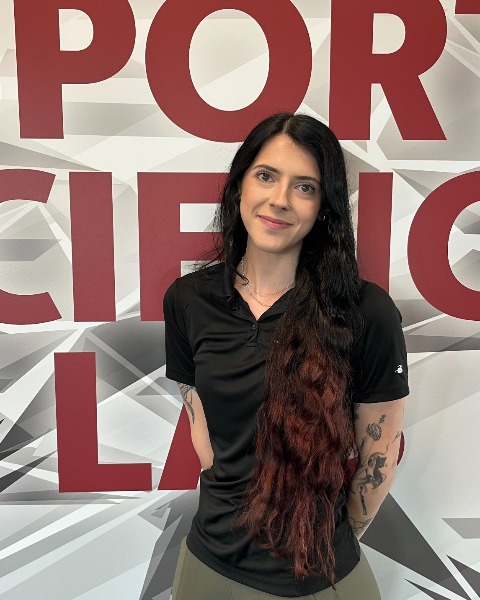Speed/Power Development
(42) RELATIONSHIP BETWEEN INTERNAL TRAINING LOAD AND ASYMMETRY CHANGE FOLLOWING A FATIGUING BOUT OF EXERCISE IN COLLEGIATE SOCCER PLAYERS


Nestor Urrea, M.S.
Doctoral Student
University of South Carolina
Columbia, South Carolina, United States- BM
Bridget A. McFadden
Assitant Professor
Queens College
Queens, New York, United States - AC
Alexa J. Chandler
Doctoral Student
University of South Carolina
Columbia, South Carolina, United States 
Gianna F. Mastrofini, MS
Doctoral Student
University of South Carolina
Cayce, South Carolina, United States
Blaine S. Lints, MS, CSCS,*D
Doctoral Student
University of South Carolina
York, South Carolina, United States
Sten O. Stray-Gundersen, PhD
Research Fellow
University of South Carolina - Sport Science Lab
Columbia, South Carolina, United States- SA
Shawn M. Arent
Department Chair of Exercise Science
University of South Carolina
Columbia, South Carolina, United States
Poster Presenter(s)
Author(s)
Background: In sports performance, asymmetry refers to inter-limb differences in muscle mass, strength, and power. Due to concerns regarding injury occurrence and reductions in performance, research is warranted to examine factors that lead to changes in inter-limb asymmetries after a fatiguing bout of exercise. Further, it is unclear if increased lower body power production abilities are protective against increasing inter-limb asymmetries under fatigue.
Purpose: This study aimed to investigate the relationship between internal training load and asymmetry change in response to a fixed external workload exercise protocol. A secondary aim was to explore whether baseline peak power impacted asymmetry change.
Methods: College soccer players (M=17, F=12; age = 21.2 ± 1.7y, % body fat = 14.2 ± 6.0%) participated in the study, completing two visits within a week. At the first visit, athletes were familiarized with the jump tests, which included bilateral countermovement jumps (CMJ) and single-leg CMJ (SLCMJ) on force plates (Hawkin Dynamics Inc., Westbrook, ME). Participants executed two attempts per jump type with 30s of rest between attempts. All jumps were performed with arms akimbo. At the second visit, each participant executed jump tests before and after a standardized 90-min simulated soccer game on a treadmill. Training load, derived from heart rate using Summated Heart Rate Zones model (Polar Team Pro, Kempele, Finland), was determined during the exercise bout to express relative demand. The fatiguing protocol was developed based on prior workload data in NCAA Division I soccer players. Asymmetry change was determined by calculating the difference between pre- to post-exercise asymmetry index derived from SLCMJ jump height. Repeated measures ANCOVA was performed to assess differences in asymmetry index pre- to post-exercise with peak power as a covariate. Pearson’s r with a 95% confidence interval (CI) was used to assess the relationship between relative training load and asymmetry change from pre- to post-exercise. Statistical significance level was set at α=0.05.
Results: There was no change in degree of asymmetry found from pre- to post-exercise (P=0.763) and peak power was not a significant covariate (P=0.962). There was no relationship found between relative internal load and degree of asymmetry change (r=0.263, P=0.163, CI: -0.114-0.574).
Conclusions: Findings from this study indicate relative training load responses to a fixed absolute workload do not correlate to the degree of change in asymmetries. Additionally, our results indicate peak power alone does not appear protective in inter-limb asymmetry after a simulated game in collegiate soccer players. Further investigation is warranted to identify what physical or physiological factors, or combination of factors, contribute to asymmetry discrepancies in high-level soccer players under fatigue and how they influence sport performance.
PRACTICAL APPLICATIONS:
While inter-limb asymmetries have been proposed to contribute to injury risk, the current study would suggest that fatigue may not exacerbate these differences. However, it is possible that there is a “fatigue threshold” beyond which these asymmetries become more pronounced, and this may need to be considered when identifying potential physical factors to help protect against these changes.
Acknowledgements:
ACKNOWLEDGEMENTS: This abstract was made possible in part by Grant Number T32-GM081740 from NIH-NIGMS. Its contents are solely the responsibility of the authors and do not necessarily represent the official views of the NIGMS or NIH.
